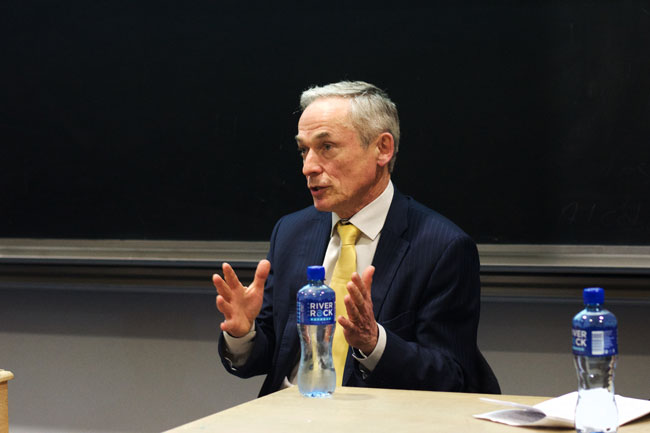The government has recommended an increase in the yearly levy it applies to employers, following calls from students’ and trade unions. If introduced, according to a report published today, it could contribute as much as €200 million to higher education.
The increase, which was recommended in a government report on higher education funding published last July, would see the National Training Fund levy rise by 0.1 per cent between 2017 and 2020, from the current 0.7 per cent level. The report notes that this could make a “significant contribution” towards the €600 million funding gap facing the higher education sector.
The report, which was worked on by the Department of Education and Skills and the Department of Public Expenditure and Reform, marks the start of a consultation process before the government comes to a final decision on any future employer contribution to higher education.
The recommendation has already been welcomed by Trinity College Dublin Students’ Union (TCDSU), who spoke at the Oireachtas Education and Skills Committee last year, alongside the Union of Students in Ireland (USI) and other trade unions. An increase in the contribution employers make to higher education, often seen as the beneficiaries of skilled graduates, was a central part of their presentation to the committee, which is currently considering options for a new funding model.
Speaking to The University Times over email, President of TCDSU, Kieran McNulty, said the union had been the “strongest voice” calling for an increase in the National Training Fund.
“I am happy that more funding seems to be coming – but remain cautious on the issue of providing for skills. If it’s broad-based, similar to the Trinity graduate attributes, then it will be positive”, he said. He noted, however, that the student contribution to funding is still be be decided.
TCDSU, alongside USI, is calling for the introduction of publicly funded education.
The Irish Universities Association (IUA), which represents and lobbies for Irish universities, also emphasised the importance of a “mixed” funding model when they appeared before the committee, calling on contributions from students, the state and employers.
This consultation document is the latest indication of the government’s thinking on higher education funding, following the publication of the report by the government’s higher education funding working group, which set out three options for the funding of the sector – the abolition of the student contribution and the creation of a predominantly state-funded system, the continuation of the current student contribution charge coupled with increased state investment, and the introduction of an income-contingent loan system.
It is likely that such an increase will face resistance from employers. Speaking during a presentation to the Oireachtas Education and Skills Committee last year, IBEC, which represents Irish business, warned that an “any adjustment to the national training fund has got to be part of a bigger solution” and that employers will want clear indications of what their money is being used to fund.
A decision on a new funding model is expected by late 2018, according to the government’s Action Plan for Education 2017, published earlier this year, confirming comments made to The University Times last year by the Minister for Education, Richard Bruton.
Sinéad Baker also contributed reporting to this piece.







